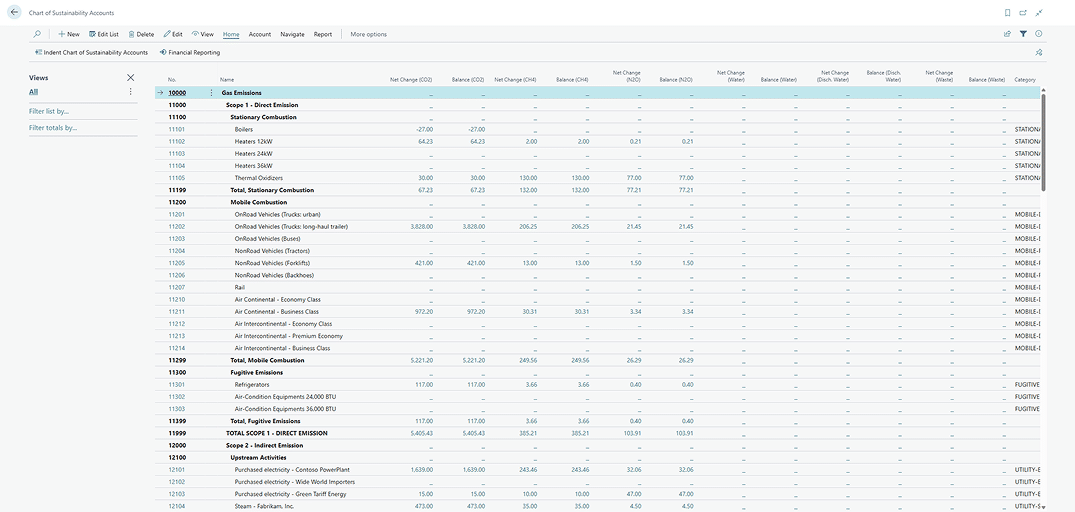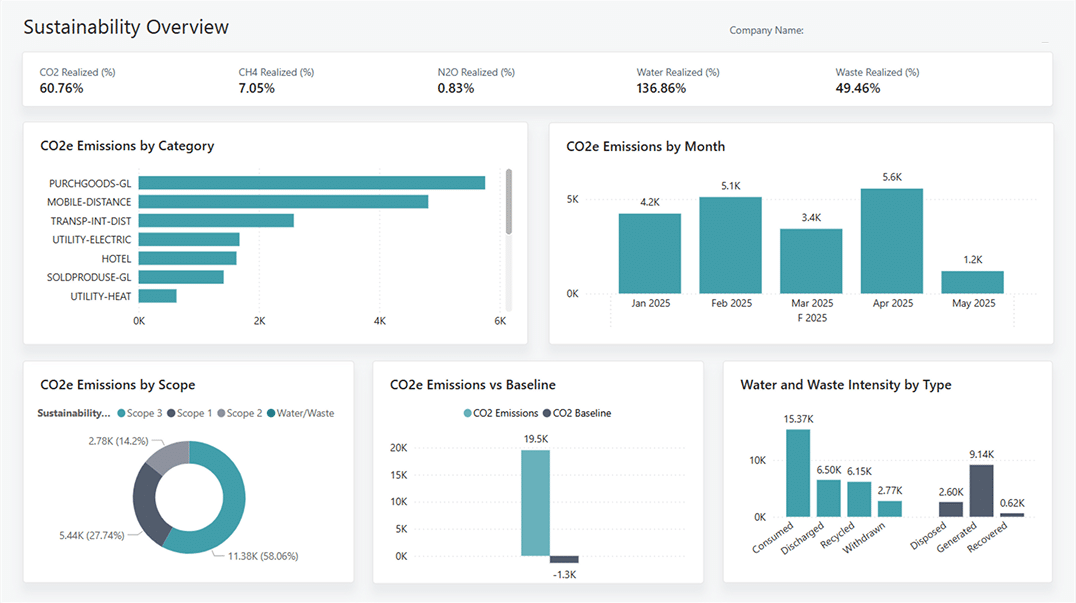Overview of Australia’s new ESG reporting requirements
Starting January 2025, sustainability reporting will be mandatory for many businesses in Australia. This change is part of a broader initiative to standardise climate-related financial disclosures and enhance transparency on environmental performance.
As part of the new regulations, companies will be required to report on scope 1, 2, and 3 emissions. These emissions span from direct on-site emissions to those associated with purchased energy, and the indirect emissions linked to activities throughout the supply chain.
These disclosures will need to be included in annual reports, alongside financial statements and directors’ reports, ensuring that sustainability performance is held to the same level of analysis as financial data.
Business Central’s sustainability management capabilities
To support businesses through this transition, Dynamics 365 Business Central has introduced new sustainability management features which are now included as part of its standard functionality. These features provide a practical solution for tracking, monitoring, and reporting greenhouse gas (GHG) emissions across all three scopes, helping businesses align with the new ESG reporting regulations.
Understanding scope 1, 2, and 3 emissions
Business Central’s sustainability management features are designed to align with established ESG frameworks, enabling businesses to differentiate emissions across the three scopes:
- Scope 1: Direct emissions from owned or controlled sources, such as stationary and mobile combustion.
- Scope 2: Indirect emissions from the generation of purchased energy, such as electricity, steam, and heating.
- Scope 3: A broader category of indirect emissions, including those linked to purchased goods, business travel, waste generation, and upstream and downstream logistics.
Capturing emissions data across all three scopes provides businesses with a comprehensive view of its environmental impact, which is an essential component of the upcoming Australian reporting requirements. Business Central additionally supports tracking of methane (CH₄) and nitrous oxide (N₂O) emissions, providing a more detailed approach to emissions management.

How Business Central supports sustainability tracking
Business Central makes it easy to collect emissions data through sustainability journals or purchase documents. Data can be entered manually or automatically calculated using predefined formulas within the system. The emissions data is then converted into carbon dioxide (CO₂) equivalents, ensuring a standardised view of the businesses carbon footprint.
The sustainability ledger consolidates all emissions data across the business, tracking emission entries and carbon credits. This data can be analysed across different categories or dimensions. Additionally, scorecards and targets can be set to monitor sustainability goals over time.

Built to support future ESG needs
In addition to emissions tracking, Business Central’s sustainability features also include:
- Role-based access to sustainability data
- Vendor and Item sustainability certification tracking
- Internal carbon fee calculation
- Scorecard comparisons with baselines and targets
Future updates will further expand these capabilities to include water and waste management, in line with Microsoft’s broader vision to turn data into actionable sustainability outcomes.
Upcoming sustainability tracking in Power BI
From June 2025, users will be able to access new sustainability tracking features in Power BI. Fenwick has worked closely with Microsoft to deliver integrated sustainability reports that help businesses track, analyse, and report on key environmental, social, and governance (ESG) metrics. These updates are part of a broader improvement to the reporting and analytics capabilities within the Sustainability suite.
The updated Power BI Sustainability app includes several new reports, such as:
- Emissions by Category and Scope
- CO2e Analysis
- Journey to Net-Zero Carbon
- Realized Emissions vs Target
- Realized Emissions vs Baseline
- Water and Waste Analysis
In addition to environmental data, the app supports tracking of social and governance metrics, including gender and age distribution, and employee qualifications. These insights provide a more complete view of ESG performance, supporting smarter and more responsible business decisions.

Start your ESG reporting
If your business is already using Dynamics 365 Business Central, the sustainability features provide a straightforward path to meet the upcoming Australian ESG regulations. For businesses looking for a new system, Business Central stands out as a solution that combines operational efficiency with environmental accountability.
With integrated tools for emissions tracking, analysis, and reporting, Business Central offers a solution for businesses seeking to enhance efficiency, stay ahead of regulatory changes, and demonstrate a commitment to sustainable practices.
Although the new reporting requirements will be phased in, we recommend that businesses start preparing now, particularly those with international operations or in regulated industries.







